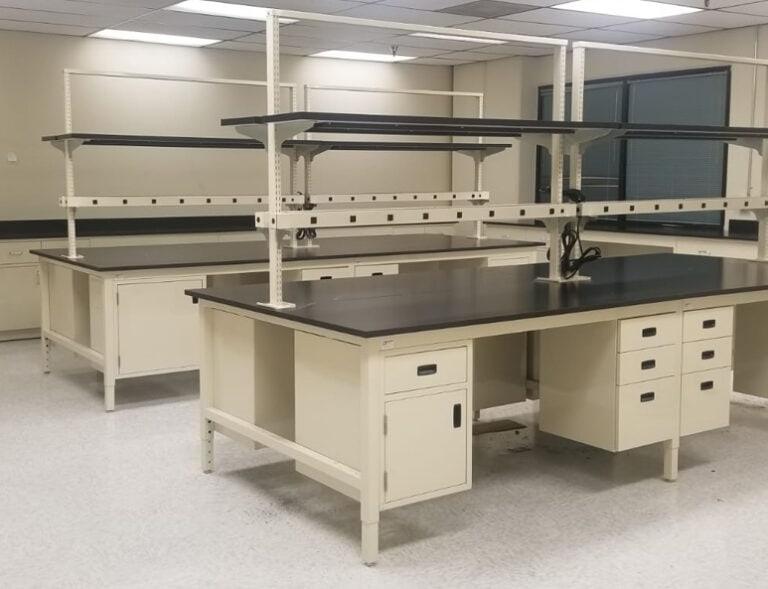
Laboratories are the cornerstone of scientific exploration, serving as hubs for research, experimentation, and discovery across various fields. Within these dynamic environments, the design and functionality of laboratory furniture play a critical role in facilitating experimentation, ensuring safety, and optimizing productivity. In this article, we delve into the world of laboratory furniture, examining its essential components and their significance in creating efficient scientific spaces. https://roland.co.id
- Laboratory Workbenches
Laboratory workbenches serve as the primary workspace for scientists and researchers. These benches are specifically designed to accommodate various tasks, from conducting experiments to analyzing samples. Key features of laboratory workbenches include chemical resistance, durability, and adjustable height to accommodate users of different statures and preferences. Additionally, workbenches often incorporate built-in storage solutions, such as cabinets and drawers, to organize tools, equipment, and specimens efficiently.
- Fume Hoods
Fume hoods are vital safety devices used to protect laboratory personnel from exposure to hazardous fumes, vapors, and airborne contaminants. These enclosed workspaces feature a ventilation system that draws potentially harmful substances away from the user and expels them outside the laboratory or through filtration systems. Fume hoods come in various configurations, including ducted and ductless models, to suit different laboratory requirements and applications.
- Laboratory Cabinets and Shelving
Effective storage solutions are essential for maintaining a clean, organized, and clutter-free laboratory environment. Laboratory cabinets and shelving units provide valuable storage space for chemicals, reagents, glassware, and other laboratory supplies. These storage systems are typically constructed from durable materials such as stainless steel or chemical-resistant polymers to withstand the rigors of laboratory use. Additionally, cabinets may feature locking mechanisms to secure sensitive or hazardous materials and prevent unauthorized access.
- Laboratory Chairs and Seating
Comfortable and ergonomic seating is crucial for ensuring the health and well-being of laboratory personnel who spend extended periods performing experiments and analyses. Laboratory chairs are designed to provide adequate support and adjustability to promote proper posture and reduce the risk of musculoskeletal injuries. Features such as adjustable height, lumbar support, and swivel capabilities enhance user comfort and productivity during prolonged laboratory tasks.
- Specialty Furniture
In addition to the essential components mentioned above, laboratories may require specialized furniture tailored to specific research needs and applications. This includes cleanroom furniture for controlled environments, microscopy workstations for imaging and analysis, and modular furniture systems that can be customized to accommodate changing laboratory layouts and workflows. By investing in specialty furniture, laboratories can optimize functionality, efficiency, and safety across diverse scientific disciplines.
Conclusion
Laboratory furniture plays a crucial role in creating functional, safe, and productive scientific environments. From workbenches and fume hoods to storage solutions and seating, each component serves a unique purpose in supporting research activities and ensuring the well-being of laboratory personnel. By prioritizing the design, quality, and ergonomics of laboratory furniture, institutions can enhance the effectiveness and success of their scientific endeavors.






